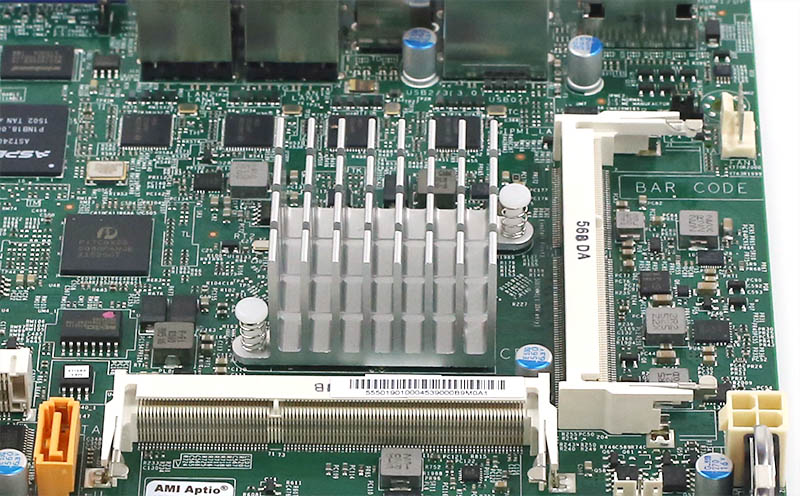Recently we received a Supermicro X11SBA-LN4F motherboard with an onboard Intel Pentium N3700 for review. The Intel Pentium N3700 is a 4 core/ 4 thread 14nm SoC. The N3700 boasts 1.6GHz base and 2.4GHz turbo clocks and a 6w TDP. We found a very interesting implication of this clock throttling on two different Braswell test platforms. With 2MB of L2 cache and supporting 1600MHz DDR3L RAM, the platform has quite a bit of processing power given its low TDP. The chip also has Intel HD graphics onboard with 400MHz base and 700MHz burst clocks. While it is certainly aimed at low power applications, the unit even has support for technology like Intel Quick Sync to speed up encoding. In terms of typical server features, it does support VT-x, EPT and AES-NI. It supports neither ECC RAM nor VT-d. Still, this is a 6w TDP part with quite a feature set.
Test Configuration
For this review we are reporting numbers from the Supermciro X11SBA-LN4F platform that we will have a formal review on shortly. Here is the spec of what we are using:
- Supermicro X11SBA-LN4F with onboard Intel Pentium N3700
- 8GB DDR3L 1600MHz (1.35v)
- Intel DC S3700 400GB
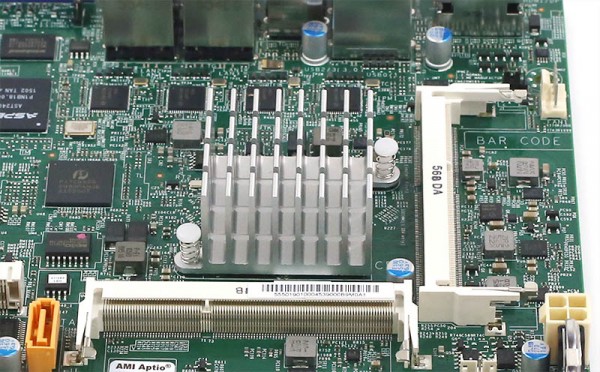
As a quick note here, the platform only supports two SATA channels so it is a bit storage limited. We added a fairly high-end drive which could make this a nice monitoring/ logging platform.
Intel Pentium N3700 Benchmarks and Performance
Four our testing we are using Linux-Bench scripts which help us see cross platform “least common denominator” results. We are using gcc due to its ubiquity as a default compiler. One can see details of each benchmark here. If you want to see an example run, you can find an example on the beta site here.
c-ray 1.1 Performance
We have been using c-ray for our performance testing for years now. It is a ray tracing benchmark that is extremely popular to show differences in processors.
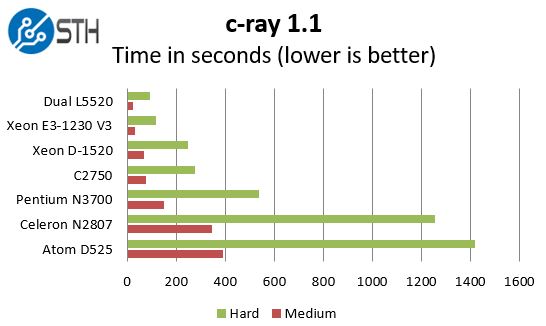
We picked a number of results from our data set just to give some rough idea in terms of performance. Our c-ray benchmark runs fairly long and does a good job stressing all cores. We can see the Pentium N3700 easily outperforms the Celeron N2807 and older generation Atom D525 which is still popular in some older-generation NAS, firewall and logging device generations.
The standout finding we had testing these chips came in the form of comparing the server oriented implementation to an Intel NUC. The X11SBA-LN4F implementation had multiple 1U chassis fans blowing cool air over the heatsink while the NUC had a relatively low power and quiet cooling solution. In fact, in our test chassis the cooling power draw was greater than that of the motherboard and RAM. Linux-Bench runs a number of tests that can range from a few seconds to many minutes during each loop. With our shorter tests the NUC and X11SBA-LN4F performed +/- 1% of each other. On our longer tests, this did have a very measurable impact as it seems as thought he NUC spent more time throttling:
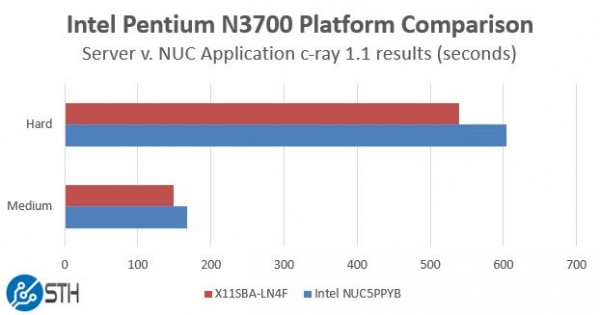
Given, we would likely take the 10-11% decrease in performance for the NUC for a 50% power reduction (due to cooling) but it does highlight how sensitive modern chips are to environment. We did not get a chance to test the Supermicro motherboard in a low-airflow environment due to power supply and chassis constraints.
7zip Performance
7zip is a widely used compression/ decompression program that works cross platform. We started using the program during our early days with Windows testing. It is now part of Linux-Bench.
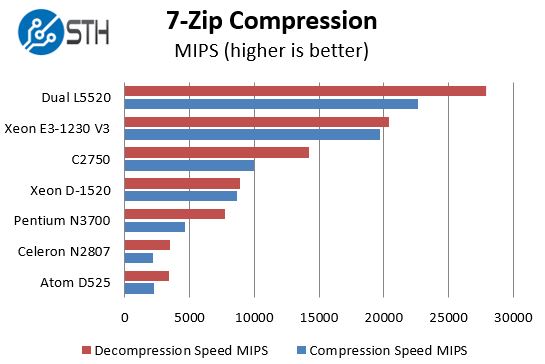
Compression is a fairly important use case for this class of chip as compressing log files and similar text storage is quite easy and popular, potentially yielding performance and space gains. Here we see a fairly large jump between the Pentium N3700 and the Celeron N3807. We also see the trend in the lower power cores of being faster at decompression than compression (by a large margin) which is something the bigger cores are showing closer parity on. We were a bit surprised to see decompression speeds closing in on the higher end Intel Xeon D-1520.
OpenSSL Performance
OpenSSL is widely used to secure communications between servers. This is an important protocol in some storage stacks. We first look at our sign tests:

When clock speed matters, the lightweight cores and lower clock speeds are hurting the N3700. Still, compared to older low-power platforms, the N3700 performs well. Moving to the verify results:
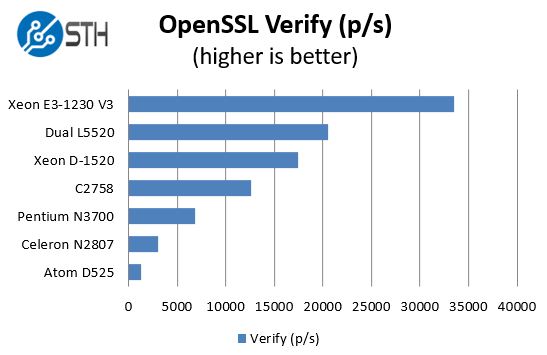
We see the same trend on the OpenSSL verify side. OpenSSL is important because these low power platforms can make decent low-power VPN appliances or even HTTPS proxies.
UnixBench Dhrystone 2 and Whetstone Benchmarks
Of course, these chips are not meant for heavy compute but we pick out the UnixBench 5.1.3 Dhrystone 2 and Whetstone results.
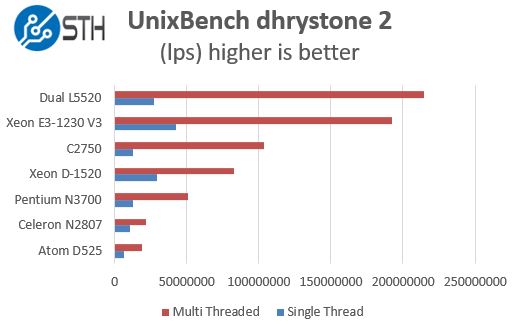
Four cores should always beg the question, what kind of cores. The N3700 falls well behind the 4C/ 8T Intel Xeon D-1520 in both the single and multi-threaded results. We did note similar single-threaded performance to the C2750, a part with 3.3x the TDP.
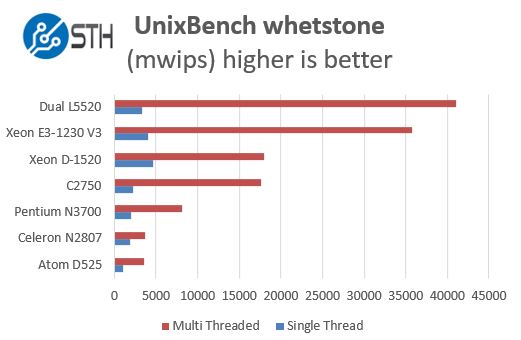
On the floating point side we do see some per-core improvement over the Celeron N2807.
hardinfo Cryptohash
Perhaps some of the most standard benchmarks that come along with many versions of Ubuntu, the hardinfo suite has been a mainstay at STH. Since the patterns we have seen above are repetitive in the hardinfo results, we are going to post these as an entire set.
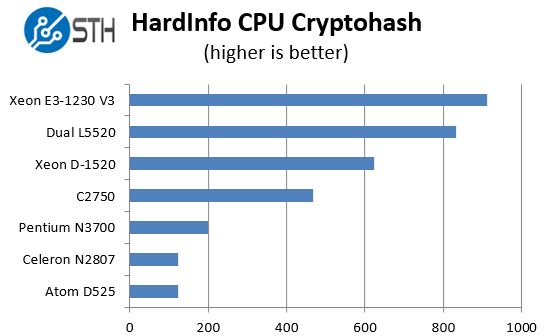
As more connected applications become encrypted, the low power Braswell platform shows significant improvements over previous generation parts, however it is slower than the bigger chips in our comparison group.
Conclusion
We perform mainly CPU tests. With a 6w TDP, solid performance and even an integrated GPU that is capable of driving multiple displays the Intel Pentium N3700 is a versatile chip. We did find the impacts of cooling to be present, however we were not able to test sensitivity. Suffice to say our motherboard was “over cooled” by a large degree. We will have a formal review of the Supermicro X11SBA-LN4F soon, but these low power platforms get us excited for the possibilities of low power network appliances for applications like pfSense.

